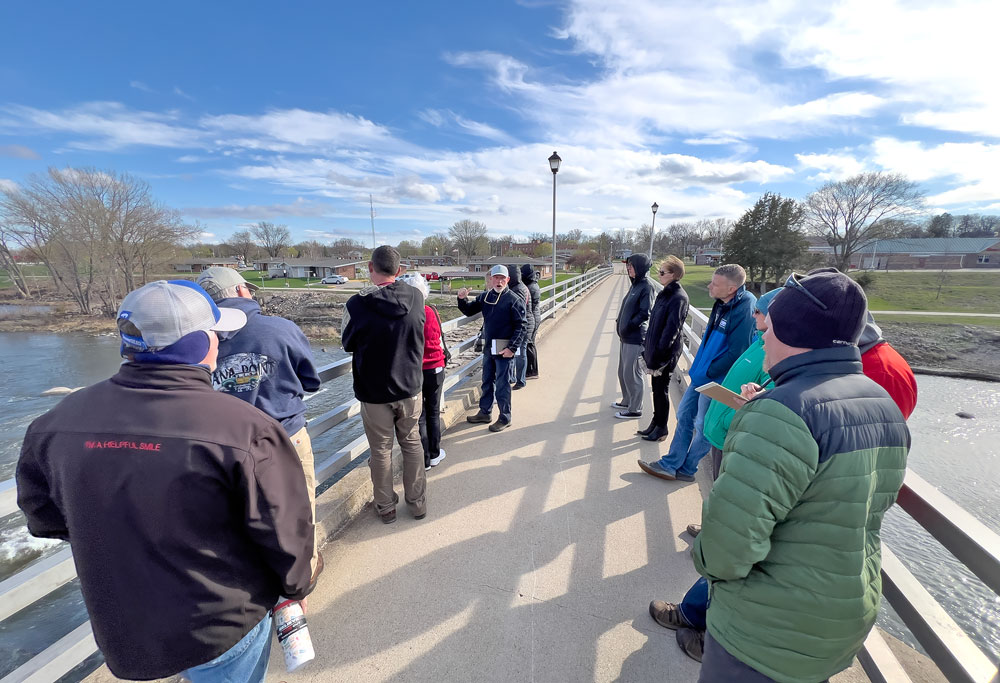The Changing Job
FROM PAPER TO PIXELS
The Changing Job
Teacher-librarians adjust to different workplaces, roles than in previous years
Teacher-librarian Carol Frye’s time at each school in the Nashua-Plainfield Community School District is limited. She spends a maximum of 18 days in the high school, providing training to teachers on support to library associates on how to best use the space. It can be tricky when she’s not there every day to see the staff’s daily challenges, Frye said.
“That’s where I rely on my associates or my principal, saying there’s a need for this, and could you work with this group of teachers or the entire group when they have their entire staff here for professional development?” Frye said. “(It) would be a matter of getting in touch with each other and making sure we knew there was a need. It’s hard for me to know where the needs are.”
Frye’s job is only one iteration of the teacher-librarian position, where responsibilities can vary from district-to-district or even school-to-school, depending on the students’ ages, district funding and staff levels –– or whether the teacher-librarian works for a school or a state program.
Expanding tight resources
When it comes to teaching resources in the state, school staff members of all subjects have turned at one point or another to Iowa Area Education Agencies, or AEA, searching for supplementary resources to boost curriculum or assignment work. Throughout the years, the agency has developed an extensive online database system, said Jane Frizzell, a teacher-librarian and consultant at AEA 267 in Clear Lake. “We do a lot of publicising the resources we have available,” Frizzell said. “(School) budgets have gotten tighter, you’re trying to do more with less….we offer a lot of virtual learning.”
Those virtual learning opportunities benefit both students and teachers, who are continuously looking for new training on utilizing new online tools. Teacher-librarians are commonly defined apart from associate librarians, in that they have received a teaching license and library sciences degree; what role they fit into varies, depending on the needs of employers’.
For many, helping coworkers stay on top of instructor training remains critical for the success of their student bodies. Recent surveys of college professors indicate that a lot of incoming students are lacking in text complexity comprehension skills –– the ability to identify and interpret complex text in academia or similar surroundings.
“That’s an ability, a skill that definitely needs to improve among our students in the entire country,” Frizzell said.
But in order to do that, teacher-librarians, and general-subject teachers, need to meet students at their home territory.
Walking the walk
During class at Charles City High School, American History teacher Rob Pittman will set up a camera out of the way and film his lessons for the day, posting it online as an immediate step-by-step for students at home who need a review of what’s been discussed. It’s a process that students have found successful with challenging classes, CCHS teacher-librarian Naomi Yaddof said.
“What he’s talking about is flip learning, where he films his classes and posts them, and the kids can look at them at home. They can pause, rewind it if they didn’t quite get the step that they’re hung up on,” Yaddof said. “Rewind, watch it again, and watch it as many times as they need to, to figure it out.”
The technology is especially useful when it comes to math or science courses, Yaddof said, and allowed her students in a computer programming class a few years ago to learn at their own pace. Professional development and inservice times for teachers have helped brainstorm new ways to take class projects in a different direction. “When we had our inservice, somebody said ‘hey, we have a way to make phone apps on your computer.’ So I’ll figure out some way to make phone apps,” Pittman said.
Professional development time is a major tool for Nashua-Plainfield teachers to connected to the library and AEA resources, Frye said. At the beginning of the 2015-16 school year, Frye and library associate Kris Griffith worked with the high school administration to put on technical training featuring AEA’s mackinVIA ebook resources.
“We wanted them to learn about these databases, electronic resources and possible ways to use them with their students as tools, another resource,” Frye said.
Roles like development organizer have been part of a major shift in librarians’ jobs, Frizzell said, and the change of pace will likely accelerate as the technology evolves.
“The intro of technology has changed their role immensely, not only are they doing the traditional information literacy things, they’re also taking on tech integration role,” Frizzell said. “It does require you to learn some more skills, and of course you want to do instruction in collaboration with classroom teaches as much as possible.”
After hours
In the time Frizzell has spent consulting school districts and librarians, the basic shape of the library has transformed to meet the new needs of society.
“So many places, it’s kind of been seen as the warehouse. I think they’re becoming much more social places, places for students to collaborate, to create products through the use of ‘maker spaces’,” table spaces where students experiment with small robotic units or create their own new idea, Frizzell said. “If you have six students, you can move the furniture around so they have an area to do that. At other times you have a totally different configuration. Meet (whatever) the needs of the moment are.”
That’s not to say that the library, the traditional gateway to print resources, has abandoned its old role. There is a need, and space, for librarians to grow that appreciation for old-fashioned technology.
“Text is always going to be important, and the role that (librarians) play in encouraging the love of reading and lifetime learning – that should never go away,” Frizzell added.
By Kate Hayden khayden@charlescitypress.com







Social Share